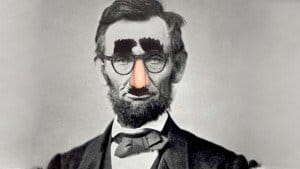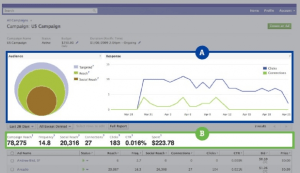 Written by ContentPowered.com
Written by ContentPowered.com
Here’s something I’ve done, and it’s something I’d wager a number of people who haven’t looked up specific information have done as well. In an attempt to create a new cover photo for my business page, I took a screenshot of Facebook and normal zoom, pasted that screenshot into Photoshop, and fiddled around with pictures until I got something precisely the right size. Then, when I went to upload it to Facebook, I discovered I got something wrong and the whole thing – meant to tie in with my profile picture – was off by a few pixels and looked awful.
I am not what you might call the most talented of graphic designers, some days.
Facebook Pages
What I eventually did was look up a Facebook Page template, and it has made my live about a million times easier. Why should I bother doing all of that work myself, when I can draw on the experience and effort of someone else? In this case, one great template is the one produced by Shortstack.
What does this template cover?
- Height and width of the cover photo.
- Height of the name and description of your business above the bottom of the cover photo.
- Height and width of the profile picture.
- Width of the border around the profile picture and the gutter to the left.
- Position of the various like/CTA/activity buttons that hover over the cover photo.
- Sizes for all the various sorts of images that can be found on a page, including newsfeed previews, timeline images, mobile images and link previews.
- Sizes of videos in various positions.
- Height and width of the app preview image.
This is an incredibly useful little document, and you can easily convert it into a Photoshop file to keep on hand for when you want to quickly size and position images on the fly. You can use this to help you update your cover photo on a regular basis, without uploading files only to find your text is hidden behind a button or your nice little link between cover photo and profile picture is skewed. Trust me, that border around the profile picture will cause you no end to trouble if you let it.
Protip: when you upload new photos, whether they’re for your cover photo or your profile picture, make sure you fill out the description. Not everyone is going to click your pictures to see it, but it will be a nice surprise for those who do. You can plug in a link and a call to action if you like. One trick I used to great effect once was to put a minor coupon link in the description for a new cover photo. Those who found it treated it like a cool little Easter egg, and got a 5% discount out of it.
Facebook Ads
There’s more to Facebook than just your page, though, right? What about all of those ads? Sidebar ads, news feed ads, mobile ads, video ads, mobile video ads… everything has a different set of dimensions, and let me tell you. Facebook LOVES their weird, non-rounded numbers. I mean, really, who the heck decided that the ideal size for a sidebar ad is 254 by 133 pixels?
Thankfully, here’s another template for you, courtesy of Jon Loomer, Facebook guru extraordinaire. It has dimensions for so many different types of images on Facebook you’ll be left wondering how you can even use all of them.
It’s worth bookmarking that page, by the way, because as much as Facebook loves their uneven numbers, they love changing them even more. It seems like every three months, Facebook is rolling out a change to their layout, their ads or their feed, and it always skews the sizes of everything. Sure, it keeps businesses on their toes, but it’s damn annoying to have to deal with like clockwork.
Facebook Apps
As a business, running a business page, you have a top bar and a sidebar box, both of which show apps. These apps can be customized in a huge number of ways. The apps themselves are essentially just web pages in an iframe, loading from off-site. Facebook puts a few restrictions on what can be loaded, so they aren’t always very dynamic or filled with multimedia, but they’re insanely useful for contests, opt-ins and other user interactions.
Of course, you need to be a web designer to make one from scratch. That’s where more templates come in. Here, since tab apps are so widely variable, you can find templates all over the place. For example, you can buy templates directly from sites like this one. These happen to costs $50 a piece, though they aren’t otherwise limited.
You can also use third-party sites like ShortStack, PageModo, Heyo, Wishpond or any of a thousand other services to make apps. These typically cost money, but they also come with internal templates you can customize for your business. Just be aware that most of these sites, when they give you a service for free, tend to watermark or brand your app unless you buy a full version of the suite.
Beyond that, there are sites like Canva, which offer very basic templates for all sorts of different uses, all for free. The caveat is that you draw from their library of images and stock photos, all of which cost some money. When you create an image you like out of their stock library, you pay for the rights to use the images when all is said and done.
The potency of templates cannot be overstated. Between a tab app suite, a .psd template and a site like Canva, you’re covered in just about every way imaginable. Well, right up until Facebook changes they way they operate once again. When that happens, you have to hope your template updates. Loomer, ShortStack and the other services will; individual purchased templates may not.



Pretty cool. I wish there was a way around the word limitation in cover photos though